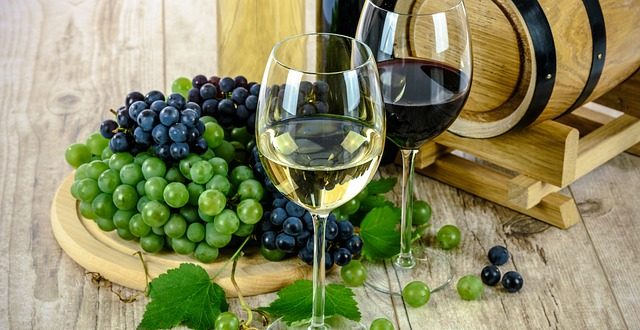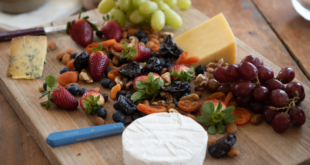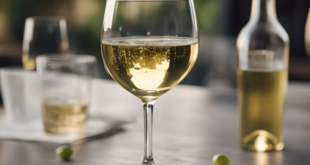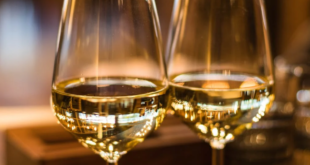The structure and components of wine can tell you an awful lot about the effects and balance of tannins, acidity, alcohol and flavour.
Tannins
The tannins in a wine come from the pips, skins and stalks. They are extremely important if you are planning on ageing a wine, as they are natural preservatives. They provide structure and backbone to the wine and can be sensed by a furring of the mouth, or a puckering of the gums. A similar sensation happens when drinking stewed tea. Tannins are released from tealeaves after stewing them in hot water for too long.
Tannins are more important in red wines than white wines. Because they act as a preservative, they fade over many years, developing the fruit flavours into more complex flavours that are found in fine, aged wine. A sufficient level of tannins provides structure to the wine, but doesn’t dominate the palate. This is when the wine is ideal for drinking.
Acidity
Acidity is needed in all fruits, be it lemons, oranges, apples or grapes. Acidity is what gives fruit its refreshing, flavoursome sensation. Without acidity, fruit would seem overly sweet and syrupy; a little bit like drinking the sugary fruit syrup from canned fruit. Wine, like fruit also requires acidity. If the acidity levels in a wine are too little, the wine will seem dull and sometimes syrupy, particularly if it is sweet wine. If the acidity levels are too high, the wine will be sharp, harsh and undrinkable. Acidity can be detected by the sharpness of the wine in the mouth, particularly around the edges of the tongue near the front.
Some acids, such as acetic acid, are known as volatile acids. In small amounts these can really lift the flavours in a wine. Too much, and the wine begins to resemble furniture polish, nail-polish remover or even vinegar. Higher acidity indicates a wine is from a cooler region, e.g. Northern France, England or New Zealand. Low acid wines often come from countries with warmer weather like Australia.
Alcohol
Alcohol is the result of fermentation and without it wine simply wouldn’t exist. It is created as a by-product of yeast, extracting energy from sugar in an environment devoid of oxygen. The amount of sugar in the grapes determines what the final alcohol level will be. For instance, in cool climates, vines struggle to ripen their grapes, sugar levels are minimal and therefore these wines often reach 7 or 8 per cent in strength. In warmer climates however, alcohol levels are determined by the yeast itself rather then the amount of sugar. Once alcohol levels are in the region of 14 per cent, yeast can no longer function and quickly dies off. This is the reason why wines stronger that 15 per cent are fortified.
The change of sugar to alcohol is such a crucial step, that controlling fermentation is the focal point of the modern winemaker. Fermentation generates heat, therefore a cool, controlled fermentation results in very different flavours in the wine when compared with wines where fermentation is allowed to run riot.
Sugar
Obviously, the level of sugar in wine determines how sweet it tastes. Most dry wines have less than 2g of sugar, however, levels of up to 25g may be present in wines which still taste dry, due to the amount of acidity and tannins alongside the sugar. Wines with a greater amount of sugar are often much sweeter. Wines such as Riesling, Champagne and dessert wines can have as much as 250g of sugar.
Oak
A major flavour not naturally found in wine or grapes is oak. Many wines are matured in oak barrels and extract the flavours from them. Some wines are even fermented in oak. Depending on where the oak is from will depend on the different types of aromas on the wine. Generally, oak maturation gives aromas of spice, butterscotch, vanilla, caramel, toffee and butter. However, it isn’t just where the oak is from that will cause an impact.
It can also depend on:
- how much oak is used
- how much of it is new as opposed to re-used
- how long the wine is kept in contact with the oak
- has the wine aged in the oak as well as fermentation taking place
Another major factor can depend on how the oak has been treated. For instance, barrels that have been steamed during manufacture may give oatmeal aromas, whereas barrels that have been toasted will have aromas of smoke and toast.
Botrytis
A fungus in which grapes are prone to, Botrytis can be bad news in vineyards where it destroys grapes. Alternatively it has a peculiar benefit on grapes known as Noble Rot where the water content is drawn from the grape. Although grapes affected by Botrytis look terrible, discoloured and shrivelled, they are the starting point for making some wonderful wines. When the water content is drawn from the grape the result is rich, luscious textures, with sweet, concentrated fruit flavours. Such locations where this takes place is Bordeaux and around the Neusiederlersee in Austria.
Yeast
When a wine has finished fermenting it stays cloudy and contaminated with dead yeast cells. There are different techniques used to clarify wine, one is racking the wine from its lees. This involves gently pouring the clear wine off once the dead yeast cells have settled to the bottom from the collection of dead yeasts.
Wines remaining on the lees for longer take on added richness and texture with flavours and aromas of biscuit and bread. This technique is used to add extra body to many white wines including Champagnes and white Burgundy wines.
 Vino-Club For Wine Lovers
Vino-Club For Wine Lovers







